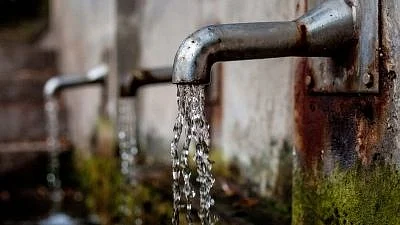North India, the country’s most populated region is now under severe risk of falling into a freshwater shortage by the year 2060 due to climate change, says recent study.
International Researcher’s have found that the Tibetan Plateau, better known as the ‘water tower’ of Asia because is supplies fresh water to approximately two billion people who live downstream, may be drying up.
Climate Change Causes Irreversible Damage
Climate change, clubbed together with a fragile climate policy could cause irreversible damage to the freshwater supply in the region, according to a new study published under the ‘Nature Climate Change’ Journal titled ‘Climate change threatens terrestrial water storage over the Tibetan Plateau.’
This will lead to a complete breakdown of the water supply for Central Asia, North India, Pakistan and even Afghanistan, predicts the study.
“The prognosis is not good… In a 'business as usual' scenario, where we fail to meaningfully curtail fossil fuel burning in the decades ahead, we can expect a near collapse - that is, nearly 100 per cent loss - of water availability to downstream regions of the Tibetan Plateau."Michael Mann, Professor of atmospheric science at Penn State
Tibetan Plateau Is Highly Sensitive to Climate Change
Despite its importance as a crucial water supply to a large chunk of the continent, the effect that climate change would have on past and future terrestrial water storage (TWS) in the Tibetan Plateau has been largely unexplored.
“The Tibetan Plateau supplies a substantial portion of the water demand for almost 2 billion people. Terrestrial water storage across this region is crucial in determining water availability, and it is highly sensitive to climate change.”Di Long, Associate Professor of hydrologic engineering at Tsinghua University.
A solid benchmark for the TWS changes that have developed in the Tibetan Plateau has been found lacking. Additionally, the deficit of reliable future projections of TWS adds a limit on any guidance on policy making, despite the fact that the Tibetan Plateau is considered a climate change hotspot, said Mann.
To fill these knowledge gaps, the teams at Penn State and Tsinghua University used satellite-based and ground-based measurements of water mass in glaciers, lakes and below-ground sources.
These were combined with machine-learning techniques to provide a benchmark of observed TWS changes over the past two decades (2002 to 2020) and projections over the next four decades (2021 to 2060).
Advances in Gravity Recovery and Climate Experiment (GRACE) satellite missions have provided unprecedented opportunities to quantify TWS changes at large scales.
Yet, previous studies have not explored the sensitivity of GRACE solutions using independent, ground-based data sources, leading to a lack of consensus regarding TWS changes in the region.
Reducing Carbon Emissions Can Prevent the Collapse of TWS
The results showed that excess water loss projections for the Amu Darya basin, (supply of water to central Asia and Afghanistan) and the Indus basin (supply of water to Northern India, Kashmir and Pakistan) indicate a decline of 119% and 79% in water-supply capacity, respectively.
“Substantial reductions in carbon emissions over the next decade, as the U.S. is now on the verge of achieving thanks to the recent Inflation Reduction Act, can limit the additional warming and associated climate changes behind the predicted collapse of the Tibetan Plateau water towers.Michael Mann, Professor of atmospheric science at Penn State
However, even in a best-case scenario, further losses are likely unavoidable, which will require substantial adaptation to decreasing water resources in this vulnerable, highly populated region of the world, explained Mann.
It was noted that more alternative water supply sources, including intensified groundwater extraction and water transfer projects, may be required to meet the increased water shortage in the future.
